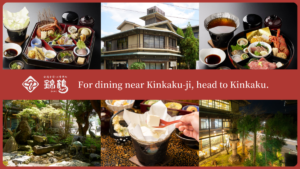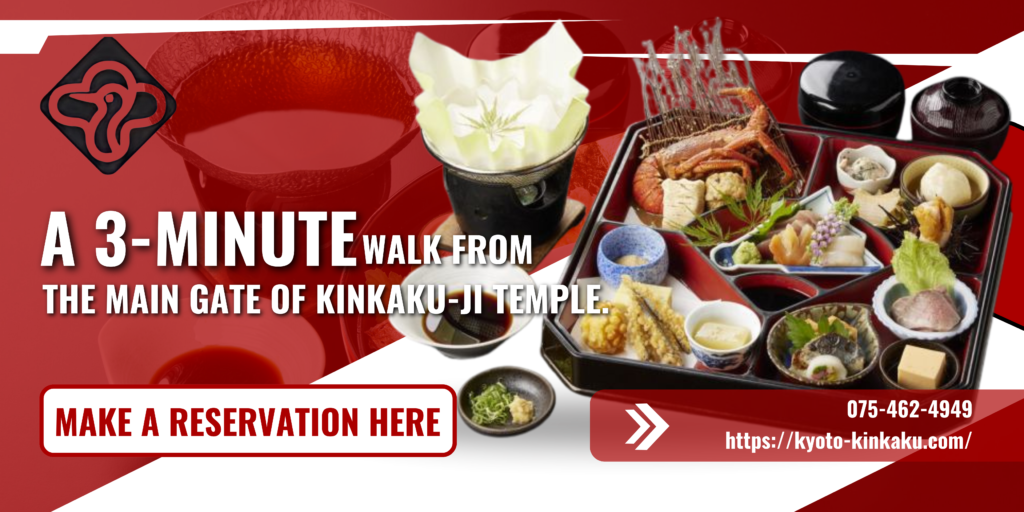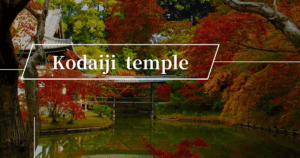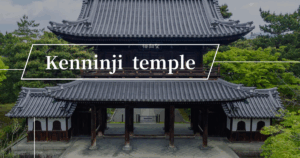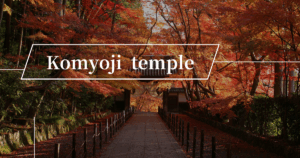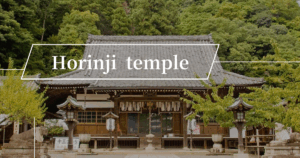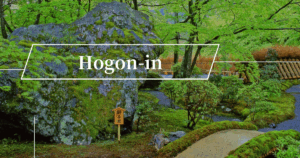Once you pass through the majestic vermilion gate, you will find yourself in a tranquil world that transcends time.
Nishi Honganji, the head temple of the Jodo Shinshu sect, is a World Heritage Site representing Kyoto with a history spanning more than 400 years.
Many worshippers still flock to the temple grounds, where the magnificent Chinese-style architecture and the teachings of Saint Shinran live on.
It is a flower of faith that blooms in the capital of Kyoto, quietly welcoming those who seek peace of mind in this chaotic modern society.
In this article, we’ll take a closer look at the history, highlights, and access to Nishi Honganji Temple.
What kind of place is Nishi Honganji Temple?
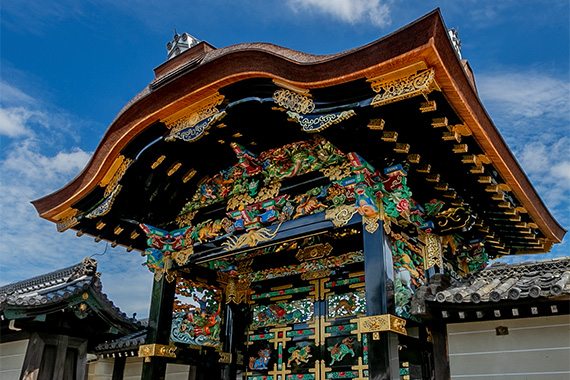
Nishi Honganji is an important temple located in Shimogyo Ward, Kyoto City, and serves as the head temple of the Jodo Shinshu Honganji sect.
Its official name is “Ryukokuzan Honganji,” but it is called “Nishi Honganji” to distinguish it from Higashi Honganji .
The current temple complex, which was rebuilt in 1602 with a donation from Tokugawa Ieyasu, includes national treasure buildings such as the Hiunkaku and Hakushoin, and was registered as a World Heritage Site in 1994 as part of the “Cultural Monuments of Ancient Kyoto.”
In particular, the “Oshoin” study hall is said to have been relocated from Toyotomi Hideyoshi’s Fushimi Castle, and its gorgeous sliding screen paintings, which bring together the best of Momoyama culture, are a must-see.
The area is also famous for the giant ginkgo tree, which is over 400 years old and turns a stunning yellow in the fall.
As a place that conveys the teachings of Jodo Shinshu, whose founder is Saint Shinran, it continues to serve as a center of faith for many followers, and is also a popular tourist spot with great historical and cultural value.
History of Nishi Honganji Temple
Honganji Temple has been walking alongside the history of Jodo Shinshu for approximately 800 years.
This temple, which continues to protect the teachings of Saint Shinran, has survived numerous wars and fires and remains a place of faith for many people today.
Here we will look back at the history of Nishi Honganji Temple through the ages.
From the foundation to the Warring States period
The origins of Nishi Honganji Temple date back to the Otani Byodo, which was built in 1272 to enshrine the remains of Saint Shinran.
Later, during the reign of the eighth head priest, Rennyo Shonin, the teachings expanded and Honganji gained influence.
However, during the Sengoku period, due to conflict with Oda Nobunaga (the Ishiyama War), the temple was forced to relocate from its base at Ishiyama Honganji (present-day Osaka Castle).
After Ishiyama Honganji fell to the castle in 1580, the temple moved from place to place, and in 1591, through the mediation of Toyotomi Hideyoshi, it was given land for the temple at its current location and rebuilt as Nishi Honganji .
Prosperity in the Edo Period
In 1602, reconstruction of the magnificent temple complex that exists today began with a donation from Tokugawa Ieyasu.
With the completion of major buildings such as the Main Hall (Amida Hall) and the Goei Hall, Nishi Honganji entered a period of stability under the protection of the Edo Shogunate.
However, in 1617, the “Hokoji Bell Incident” incident led to the definitive separation of East and West Honganji temples, and the system of East and West Honganji temples that exists to this day was established .
Throughout the Edo period, Nishi Honganji functioned as a religious center overseeing branch temples throughout the country and also promoted many cultural projects.
In particular, the “Oshoin” study hall was relocated from Toyotomi Hideyoshi’s Fushimi Castle and is highly regarded as an architecture that embodies the essence of Momoyama culture.
Nishi Honganji Temple after the Meiji Period
Although the Shinbutsu Bunri Edict (law to separate Shinto and Buddhism) following the Meiji Restoration placed Nishi Honganji in a difficult position for a time, it soon began to embark on the path to modernization.
In 1872, the sect was reformed to become the Honganji sect, and began to focus on education and social work.
During World War II, the temple faced hardships, such as the loss of many of its metal structures, but it was rebuilt after the war and was registered as a World Heritage Site in 1994 as part of the “Cultural Monuments of Ancient Kyoto.”
Today, as the head temple of the Jodo Shinshu Honganji sect, it has approximately 10,000 branch temples nationwide and approximately 7 million followers, and continues to play a religious and cultural role in modern society by balancing tradition and innovation.
Highlights of Nishi Honganji Temple
Nishi Honganji is not only known as the head temple of the Jodo Shinshu sect, but is also a cultural treasure trove housing numerous national treasures and important cultural properties.
The vast grounds are dotted with buildings and gardens that are full of history and beauty.
Here we will introduce three major attractions that you cannot miss when visiting Nishi Honganji Temple.
Highlights of Nishi Honganji Temple
- National Treasure Hiunkaku and Shoin
- Main Hall (Amida Hall) and Goei Hall
- Garden of the Big Ginkgo and Tiger Cub Crossing
National Treasure Hiunkaku and Shoin
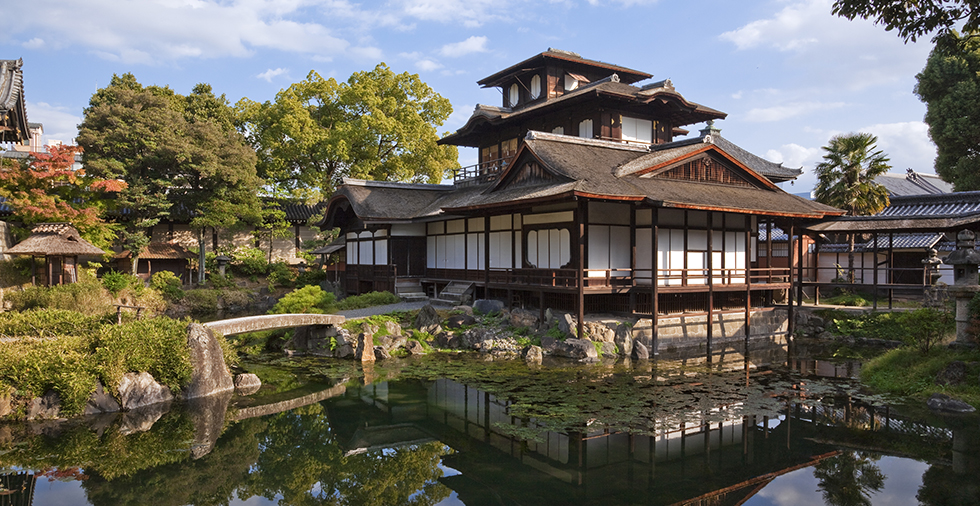
Hiunkaku, the representative building of Nishi Honganji Temple, is a national treasure that conveys the architectural beauty of the Momoyama period to the present day.
The three-story tower was given the name “Flying Clouds” (Hibun) because it offers a panoramic view of Kyoto city from the top floor.
The adjacent Shoin, a national treasure, consists of the Daishoin and Shiroshoin, and the Daishoin in particular is said to have been relocated from Toyotomi Hideyoshi’s Fushimi Castle .
The interior is decorated with gorgeous sliding screen paintings by the Kano school, allowing you to experience the splendor of Momoyama culture.
The paintings of flowers, birds, wind and the moon on the sliding doors and ceilings depict the natural beauty of the four seasons and continue to fascinate visitors.
The ceiling painting in the “Phoenix Room” is a must-see, with its delicate yet bold brushwork demonstrating its high artistic value.
Main Hall (Amida Hall) and Goei Hall
The central features of Nishi Honganji Temple are the Main Hall (Amida Hall) and the Goei Hall, both of which are majestic structures designated as Important Cultural Properties.
The main hall enshrines Amida Buddha as the principal image, and the Goei-do Hall houses a portrait of the sect’s founder, Saint Shinran .
These two halls are called “Sodo” and boast a vast space and are some of the largest wooden buildings in Japan.
In particular, the interior of the Goei-do Hall is decorated with lavish carvings, and the entire building complex, including the Karamon Gate and corridors, displays beautiful harmony.
Visitors can sit in the tatami-floored hall, calm their minds in a solemn atmosphere, and come into contact with the teachings of Saint Shinran.
By visiting both halls, you will be able to experience the depth of faith of Jodo Shinshu.
Garden of the Big Ginkgo and Tiger Cub Crossing
In the grounds of Nishi Honganji Temple stands a large ginkgo tree that is said to be about 400 years old.
This giant tree, which is approximately 27 meters tall and has a trunk circumference of 11 meters, is a scenic spot that attracts many tourists, especially in the autumn when the leaves turn yellow .
The Tiger’s Cub Crossing Garden is a rock garden located between the main hall and the Miedo hall. The dry landscape garden, with its arrangement of large and small stones, is said to represent a tiger crossing a river with its cub on its back.
The garden symbolizes the loving love of a parent for their child and expresses the spiritual values of Nishi Honganji Temple.
The nature within the temple grounds, which changes with each season, creates a tranquil space that helps visitors forget the hustle and bustle of the city, providing peace of mind to all who visit.
What is the best season to visit Nishi Honganji Temple?
Nishi Honganji Temple can be visited all year round, but the most recommended seasons to visit are autumn and spring.
In autumn (mid-November to early December), the approximately 400-year-old “Ginkgo” tree turns a splendid golden yellow, enveloping the entire temple grounds in a fantastical atmosphere.
Additionally, spring (late March to early April) is cherry blossom season, when you can enjoy the sight of the beautiful cherry blossoms in full bloom within the temple grounds.
In addition, annual events such as the Obon Festival in August and the Memorial Service for the Death of a Buddhist Priest in January are also great opportunities to learn more about the traditions and culture of Nishi Honganji.
Some cultural assets will be open to the public for a special viewing, allowing you to experience a side of the temple that is not normally visible.
Nishi Honganji Temple shows a different side to each season, but if you visit early in the morning on a weekday when there are fewer tourists, you can enjoy the quiet environment and solemn atmosphere that is characteristic of the temple.
Access to Nishi Honganji Temple
Located in the heart of Kyoto, Nishi Honganji Temple is relatively easy to access by public transport.
It is easily accessible from the major tourist spots in Kyoto city, making it an easy location to incorporate into your Kyoto sightseeing trip.
We will introduce specific access methods from the nearest transportation hubs and tourist attractions.
Access from Kyoto Station
You can also walk to Nishi Honganji Temple from Kyoto Station.
Exit the JR Kyoto Station Central Exit and walk west for about 15 minutes (approximately 1.2 km) to arrive.
The road is pretty much straight so you won’t get lost.
If you are using public transportation, Kyoto City Bus is convenient.
Take city bus route 205 from Kyoto Station Bus Terminal A2 stop and get off at the Nishi Honganji-mae bus stop; the hotel is right in front of you (approximately 5 minutes).
If you take a taxi, it takes about 5 minutes from the Kyoto Station taxi stand.
Roads can be congested during peak tourist seasons, so we recommend that you allow yourself plenty of time.
Renting bicycles is also a popular and efficient way to travel around Kyoto.
Access from Kinkakuji Temple
It is convenient to get from Kinkaku-ji Temple, located in the northwest of Kyoto, to Nishi Honganji Temple by public transportation.
Take city bus route 205 from the Kinkakuji-mae bus stop and get off at Nishi Honganji-mae (approximately 30 minutes).
Alternatively, take city bus route 101 and get off at Shijo Karasuma, then walk for about 10 minutes.
If you are using the city subway, go to Kitaoji Station and board the Karasuma Line.
Get off at Gojo Station and walk for about 10 minutes to reach Nishi Honganji Temple (approximately 40 minutes).
If you take a taxi, it will take about 20 minutes from Kinkakuji Temple, but it is an efficient option for those with limited time for sightseeing.
Bringing a Kyoto tourist map with you will make transferring between buses and subways smoother, so we recommend obtaining one at the Tourist Information Center at Kyoto Station.
Nishi Honganji Temple admission fees and hours
Below is a table summarizing basic information about Nishi Honganji Temple.
| item | detail |
|---|---|
| Visiting hours | 5:30am – 5:00pm (may vary depending on the season) |
| Admission fee | Main Hall and Mikagedo Hall: Free Shoin Special Opening: Adults 500 yen, Junior and Senior High School Students 400 yen, Elementary School Students 300 yen Hiunkaku Special Opening: Adults 500 yen, Junior and Senior High School Students 400 yen, Elementary School Students 300 yen Shoin and Hiunkaku Combined Ticket: Adults 800 yen, Junior and Senior High School Students 600 yen, Elementary School Students 500 yen |
| Special release period | Spring (late March to early May), Autumn (late October to early December) *Special opening dates vary from year to year |
| Closed | Main hall and Miedo hall: Open all year round Shoin and Hiunkaku: Closed except during special opening periods |
| Group discounts | 10% discount for groups of 20 or more |
| inquiry | TEL: 075-371-5181 |
| Official website | https://www.hongwanji.or.jp |
Recommended spots around Nishi Honganji Temple
The area around Nishi Honganji Temple is dotted with temples and historical buildings that give a sense of Kyoto’s deep history and Buddhist culture.
If you visit here after visiting Nishi Honganji Temple, you will be able to experience Kyoto’s religious aspects and traditions on a deeper level.
Here we will introduce mainly the temples and Buddhist temples that are relatively close to Nishi Honganji Temple.
Higashi Honganji Temple (Head temple of the Otani branch of Shinshu Buddhism)
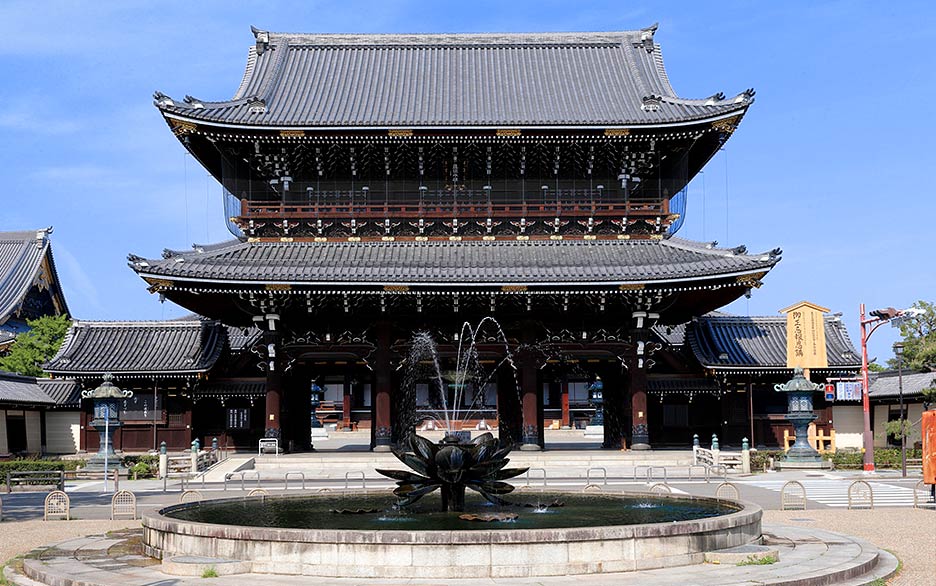
Higashi Honganji, located about a 15-minute walk from Nishi Honganji, is the head temple of the Jodo Shinshu Otaniha sect.
It was built in 1602 and is affectionately called “O-Higashi-san” in contrast to Nishi Honganji’s “O-Nishi-san.”
The Gokaido Hall is known as one of the largest wooden buildings in Japan and has an overwhelming presence.
The vast Goei-do Gate is famous as a massive double gate and is one of the largest and most impressive wooden gates in Kyoto City.
Admission is free, and by visiting and comparing the architectural styles of both Honganji Temples with Nishi Honganji, you will be able to gain a deeper understanding of the characteristics and charms of both temples.
In particular, the Rokumanto Festival, held every August, attracts many people with its fantastical atmosphere.
Toji Temple (Kyoogokokuji Temple)
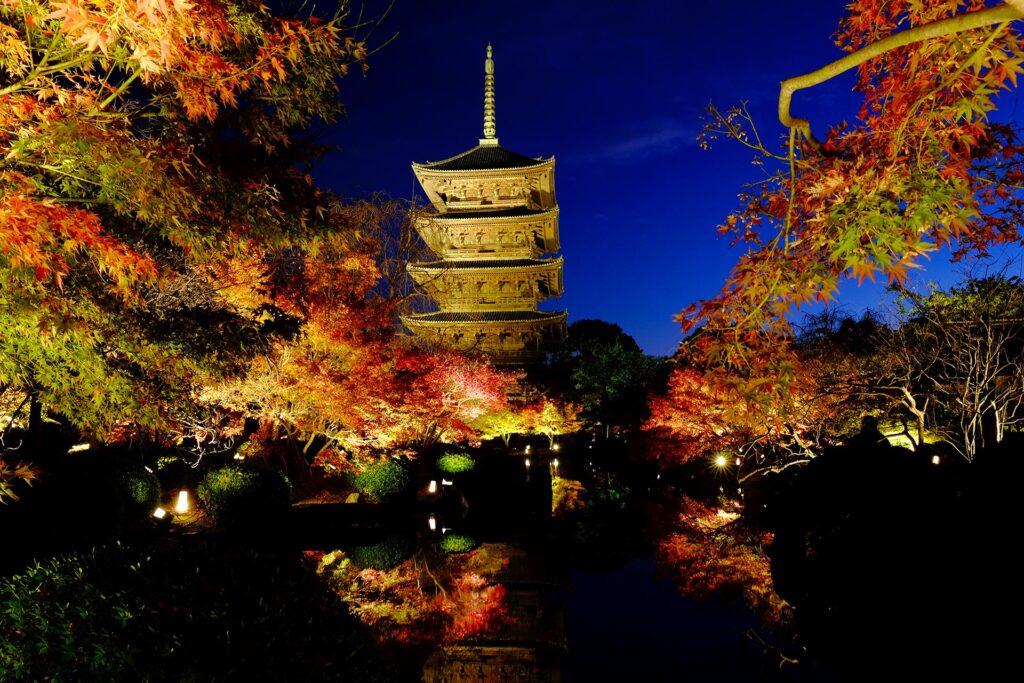
Toji Temple, located about a 20-minute walk south from Nishi Honganji Temple, is a Shingon Buddhist temple founded by Kobo Daishi Kukai as the guardian temple of Heian-kyo.
Registered as a World Heritage Site in 1994, the 55-meter-tall five-story pagoda has become one of the symbols of Kyoto.
This five-story pagoda is the oldest in Japan, and is especially beautiful when lit up at night.
Within the temple grounds are a lecture hall housing 21 Buddha statues that depict a three-dimensional mandala, the national treasure Kondo Hall, and many cultural assets related to Kobo Daishi.
The Kobo Market, held on the 21st of every month, is a lively market with around 1,000 stalls selling antiques, used clothing, food and more, and is popular among locals.
Honganji Temple (Amida Temple)
Honganji Temple (Amidaji Temple), located about a 10-minute walk from Nishi Honganji Temple, is a temple of the Jodo sect of Buddhism, Seizan Zenrinji school.
The garden commonly known as “Shosei-en” is particularly famous, and is a stroll-style garden where you can enjoy the natural beauty of the four seasons.
Built in the early Edo period, this famous garden features a stroll-style pond and many points of interest, including Horaijima and Dejima, and is particularly beautiful during the autumn foliage season.
Like Nishi Honganji, it is said to have a connection with Saint Shinran, but it belongs to a different sect.
This is a quiet temple, a place where you can spend some relaxing time away from the hustle and bustle.
You can enjoy a delicate and tranquil atmosphere that is different from the solemnity of Nishi Honganji Temple.
FAQs about Nishi Honganji
summary
Nishi Honganji Temple is the head temple of the Jodo Shinshu Honganji sect with over 400 years of history, and is one of Kyoto’s most representative temples, having been registered as a World Heritage Site in 1994.
There are plenty of things to see, including the national treasures Hiunkaku and Shoin, the large main hall and Goei-do hall, and the 400-year-old ginkgo tree, and you can enjoy the beauty of the four seasons.
Admission to the temple is generally free, but on special occasions you can also visit the interior of the Shoin and Hiunkaku for a fee.
It is conveniently located within walking distance of Kyoto Station, and the surrounding area is dotted with historical buildings such as Higashi Honganji Temple and Toji Temple.
If you are visiting Kyoto, be sure to visit Nishi Honganji Temple and experience peace of mind in a tranquil space where tradition and faith live on.
